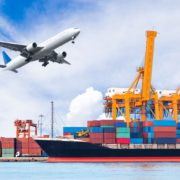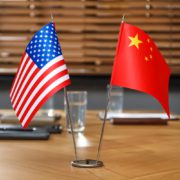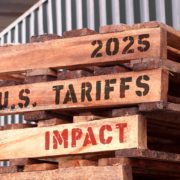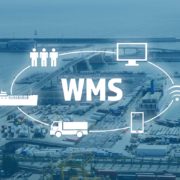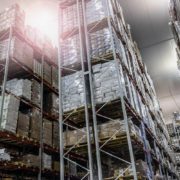Given the current economic and political context, what can we expect for transportation and logistics capacity through the end of 2025? In short, most freight modes are entering H2 with abundant capacity, but there are potential pinch points on the horizon. Here’s a mode-by-mode outlook:
- Ocean Shipping: Ocean carriers are in a significantly better position capacity-wise than in the last two peak seasons. Global container fleet size has grown – new mega-vessels ordered during the boom are being delivered, with container ship capacity projected to rise ~46% by 2026 (far outpacing demand growth) (transportationtaxconsulting.com). This suggests that unless demand unexpectedly soars, overcapacity will be an ongoing theme in late 2025. Carriers have already been blanking (canceling) many sailings to prop up rates. We anticipate they will continue this practice into Q3–Q4, especially after the summer rush subsides. Indeed, Drewry’s analysts forecast a weakening supply-demand balance in 2H 2025, putting renewed downward pressure on spot freight rates (drewry.co.uk). Shippers can likely expect relatively favorable ocean pricing for the rest of the year compared to pre-pandemic norms, though not as dirt-cheap as the trough of late 2023. One caveat: if U.S.–China tariffs snap back in August, trans-Pacific volumes could dip sharply in Q4, leading carriers to possibly consolidate services or idle ships, which could cause localized capacity tightness (e.g. fewer weekly sailings to certain smaller ports). Additionally, the West Coast port labor situation – stable since last year’s ILWU contract – should remain calm; we don’t foresee labor disruptions on the U.S. West Coast in this period. In Europe, however, labor strife has been an issue (strikes in Germany, France, etc. in spring 2025). That has led to port congestion in Northern Europe (waiting times 5–6 days at some ports) . If those issues persist or flare up again, carriers might reroute some Europe-bound services, which could affect schedule reliability into Q3. Shippers should build cushion into ocean transit plans and stay flexible on port routings (consider alternate ports that are less congested). By late Q4 (post-holiday), we expect a lull in volumes and plenty of vessel space – a good time for opportunistic shippers to negotiate 2026 contracts at competitive rates.
- Air Freight: The outlook for air cargo capacity is cautiously optimistic. International passenger flights (which carry a huge portion of airfreight in their bellies) continue to ramp up. By Q4 2025, global air travel is forecasted to be near pre-2020 levels, which translates to restored cargo capacity on many routes. This is already evident on Europe-North America and intra-Asia lanes, where capacity has largely normalized and rates have remained stable. However, demand swings could temporarily tighten certain routes. The trans-Pacific air market, as noted, is going through a summer cargo boom due to tariff front-loading (chrobinson.com). That demand is expected to taper by early Q3 once the duty deadline passes. After that, if U.S.–China trade slows in Q4, we could see a surplus of air capacity and potentially very soft air rates for late-year (barring the usual pre-Christmas tech product rush, which might be muted if inventories were pre-stocked). One trend to watch: modal shift back to ocean. During the pandemic, high ocean rates and poor reliability drove shippers to air; now with ocean reliable and cheap again, some of that discretionary air freight (like e-commerce goods that aren’t truly urgent) may shift back to sea. This could keep air demand in check. On the flip side, extreme weather events can suddenly boost air demand – e.g. if fall hurricanes disrupt ocean ports or if production delays require last-minute air lifts. Also, certain industries (semiconductors, pharmaceuticals) have robust pipelines and will use air regardless of cost. Net-net, expect ample air cargo capacity in Q3–Q4 and continued normalization of rates. Carriers will be hungry to fill planes, especially freighters. Shippers should still secure space for peak weeks (like early December for final holiday stock) but overall, air freight should be a reliable relief valve if you need to expedite late-year shipments. Keep an eye on fuel surcharges though; if oil prices spike with geopolitical events, air freight costs will rise accordingly even if base rates don’t.
- Trucking (North America): The U.S. trucking industry enters late 2025 in a state of overcapacity, and it will likely remain a “shippers’ market” well into Q4. The first half saw a wave of carrier bankruptcies and exits, yet capacity still exceeded demand. Tender rejection rates (a measure of carrier tightness) only just crept above 10% in certain regions by June, after being near record lows for over a year (freightwaves.com). Contract truckload rates have been trending down, and spot rates are at or below carriers’ operating costs in many lanes, forcing weaker operators out. The process of rebalancing is gradual – current estimates suggest that not until early 2026 will the truckload sector burn off the excess capacity and return to an equilibrium in pricing (chrobinson.com). For Q3–Q4, this means shippers can count on plentiful trucking options and competitive rates for most lanes. This is a boon for domestic distribution and last-mile delivery budgets. However, a few points of caution:
- Seasonal demand in Q4 (the holidays) will still cause localized tightness. Carriers often see a surge in volume from retail, parcel, and perishables in Oct-Nov. Even in a soft market, expect spot rates to rise seasonally in those months especially in distribution hubs and final-mile capacity for e-commerce.
- Fuel prices are a wild card. With diesel prices having fallen to around $3.50/gal in Q2, trucking costs benefited. But any sustained oil price increase (e.g. from the Middle East situation) in Q3 or Q4 will directly feed into fuel surcharges. So while base linehaul rates might stay low, the total cost per mile could jump on fuel volatility. Shippers should consider fuel hedging or adjusting budgets if crude remains above, say, $75/barrel.
- Infrastructure or regulatory changes: By late 2025, some new regulations (emissions rules in California, for instance) will tighten operating conditions in certain states. California’s zero-emission truck mandates and AB5 labor law have the potential to reduce capacity or raise costs in that region. Also, hours-of-service flexibility granted during COVID is gone, meaning carriers have less wiggle room to absorb delays. These factors are not deal-breakers but could slightly erode some of the excess capacity by making operations tougher for small carriers.
Overall, though, trucking in H2 2025 should remain a bright spot for shippers – reliable and affordable. Use this period to secure strong contract rates into 2026. Also, with the railroads improving service, consider intermodal for long-haul moves; truckload competition has already pushed rail providers to be more price-aggressive. If the economy were to unexpectedly boom late-year (not likely, but if), there is still a large cushion of idle trucks and drivers to handle it. One note: the driver shortage narrative is less acute right now due to the soft market, but longer-term demographics still suggest challenges ahead. Wise shippers will continue to treat core carriers well and be strategic about commitments, because the pendulum will swing back after 2025.
- Labor and Workforce: Labor availability in supply chain roles – from warehouse staff to truck drivers to port workers – is poised to improve slightly in late 2025 compared to the last couple of years. As mentioned, a cooling economy is already easing the ultra-tight job market. Unemployment, while still low, is ticking up gradually, and anecdotal reports suggest it’s becoming a bit easier to hire warehouse associates and hourly manufacturing labor in some regions. If the Fed’s rate cuts are indeed coming because they see higher unemployment aheadfile-8ca5d51wrmsdbxsaxnwhtv, then by Q4 we could have a more balanced labor market. That said, “easier” is relative – many logistics operations still report worker shortages, just less severe than before. Warehouse labor in major ports (LA/Long Beach, NYC/NJ) remains in demand, especially with record volumes moving into bonded facilities. But wage pressures have moderated as turnover slows. Driver retention has improved because fewer new trucking jobs are available; paradoxically, some laid-off drivers from small carriers might be back as available capacity for larger fleets. For skilled roles (CDL drivers, licensed customs brokers, etc.), competition will persist, but overall labor inflation should calm down in late 2025.
There are two caveats: labor relations and strikes, and technology impacts. On labor relations, 2025 has seen its share of labor actions – in Q2, some European port strikes and U.S. rail worker disputes made headlines. Looking ahead, one potential flare could be in parcel delivery: the new UPS union contract runs through 2028, so no risk there now, but other logistics sectors (like warehouse gig workers or Amazon’s fulfillment network employees) have been pushing for unionization. A strike in a major e-commerce fulfillment or delivery network during peak season, while not highly likely, is not impossible. And globally, union activism is high – any industrial action at major ports or among trucking unions (in, say, South America or Asia) could disrupt specific trade lanes in Q3–Q4. The second caveat is technology. Automation and AI adoption in supply chain could start to visibly reduce labor needs in certain areas by late 2025. For instance, more warehouses are deploying robotics for picking and packing; driver-assist technologies are improving trucking efficiency. The full impact is longer term, but companies are already using tech to offset labor shortages. One result is that productivity per worker is rising, which could mean you don’t need to hire as many seasonal workers in Q4 as you did in the past to handle the same volume. Still, training and upskilling existing staff to work alongside these new technologies will be a focus. In sum, the labor outlook is cautiously improving for employers, but don’t assume labor challenges are over. Continue to invest in employee retention and training – it pays off when the market swings back or when new tech comes in.
In summary, Q3–Q4 2025 will test supply chains, but it won’t be a repeat of the unprecedented crises of 2020–2021. We’re in a different phase now – one that rewards agility and informed strategy. Manufacturers, retailers, and logisticians who stay alert to trends, adapt quickly, and seize on the favorable aspects (like lower transport costs) can thrive even amid the challenges. The holiday peak season will likely be smoother than the past couple years, yet new challenges could emerge from the geopolitical realm. It’s a time to be vigilant but also to optimize and build for the future.
Is your supply chain prepared for what’s next? At Euro-American Worldwide Logistics, we help businesses chart a steady course through uncertain waters. Whether it’s adjusting your freight plan for peak season, finding warehousing solutions, or navigating the latest trade regulations, our experts have you covered.
Don’t go it alone this year. Contact Euro-American Worldwide Logistics today to discuss your Q3–Q4 logistics strategy. Let us put our global network and seasoned insight to work for you – so you can focus on growth while we handle the complexity. Reach out now and fortify your supply chain for a strong finish to 2025!

